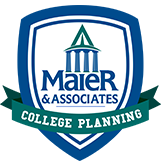Strategies for High School Students
You – or your college-bound child – is a high school senior. If you haven’t really been involved in the planning and financial aid process until now, you’re probably feeling a heightened sense of anxiety. After all, time’s running out.
So your first priority is to make college finance your first priority. The good news is there are still many strategies you can use to significantly reduce the high cost of college before you complete the FAFSA. Without the help of a college funding consultant it’s unlikely you’ll be able to implement all of them. But some of the ideas below can have a dramatic effect on the financial assistance you can receive.
Some of them will take time and effort for you to execute. But remember: college is a four-year plus proposition. If you receive $5,000 more in additional financial aid each year that means you save $20,000 over four years.
If you are feeling confused, or overwhelmed by the financial aid process and you are a student or parent of a senior in high school, don’t despair. There’s still hope. Learn more on our Late Stage planning page, contact us, or register for one of our free upcoming workshops.
Basic Strategies
- Many colleges require their own financial aid forms – in addition to FAFSA and CSS PROFILE – before they’ll award any scholarships or even student loans. Find out if that’s the case with any of the colleges you’re applying to.
- Determine eligibility for merit based scholarships.
- Make sure your paperwork is complete, accurate and timely. Regardless of your income or assets, you must complete a FAFSA, CSS PROFILE to be eligible for any financial assistance; this is also true of many institutional financial aid forms. Each of these forms must be consistent with one another. We can’t overstate the importance of this: Errors or omissions here may eliminate any chance of receiving college scholarships or federal student loans.
Do Your Homework on the Schools
- Identify schools where you or your child will be in the top 20% of the admitting freshman class. We always encourage this. Finding schools where you’ll be in the top 20% is one of the most important steps to take if financial aid is important to you.-Those students generally receive more free college scholarships – and therefore need less student loan money.
- Find out those schools’ historic tendencies to meet a family’s Expected Family Contribution, or EFC.
- The federal government and colleges have definitions of your “need.” Apply to colleges that meet 75% to 100% of that need.
Be Asset Savvy
Calculations of eligibility and need include some of your assets but not others. If it works to your advantage, move includible assets to non-includible accounts wherever possible. Be sure to consider any potential tax implications and several other factors prior to reallocating any accounts, and make sure everything is legally implemented. We can help you do this.
Scholarship Search and College Prep
There are many scholarship search offers that promise college money for a fee. Many of them are scams! Be vary wary of scholarship offers. Qualified teams such as Maier & Associates College Planning can help you find scholarships as part of a well-rounded college funding plan.
Also be sure you meet with your guidance counselor to make sure you:
- Are taking the right classes.
- Take college prep tests
- Take advantage of pre-tests and practice software to boost your scores
- Begin college visits
- Inquire about scholarship opportunities
- Discuss and consider dual enrolment






